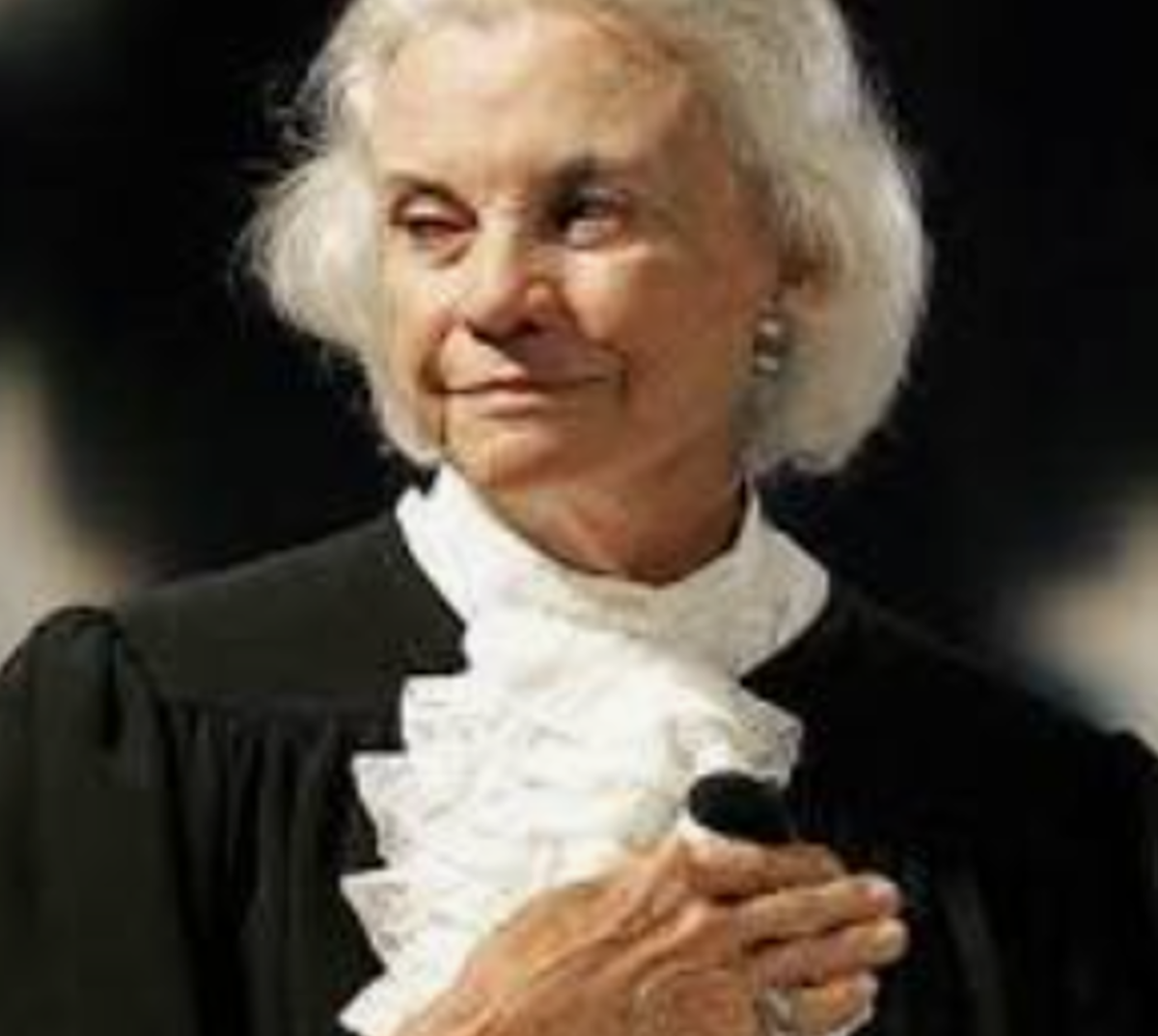
Sandra Day O'Connor was the first woman to serve as a U.S. Supreme Court Justice. During her term on the Court, she was regarded as among the most powerful women in the world. In 1981, O'Connor, who was 51, was nominated by President Ronald Reagan and confirmed unanimously by the Senate. She served for 24 years.
O’Connor was the picture of self-confidence. She was athletic, playing tennis, golf, as well as skiing and horseback riding. In the courtroom, colleagues said, “She had a piercing gaze that could turn into an intimidating stare.”
Born in 1930, Justice O’Connor grew up during the Great Depression on a 260 square-mile cattle ranch near the Arizona-New Mexico border. In spite of being born into a wealthy family, she worked on the ranch. She drove tractors, branded cattle, and fixed fences; activities that helped form her belief that individual action can solve almost any problem.
Because there was no school near the ranch, Justice O’Connor lived with her grandmother in El Paso during the school year to attend a private school where she was an exceptional student and graduated from high school at the age of 16. She graduated from Stanford University, then Stanford Law School, where she befriended the young William Rehnquist.
Despite graduating 3rd in her law school class, she was offered only a secretarial position when she applied for a job at a major law firm. Her first job was as deputy attorney for San Mateo County, California. In 1957, after the birth of her first child, O’Connor opened a law practice in a suburban shopping center.
In 1965, O’Connor was appointed an Assistant Attorney General for the State of Arizona. Four years later she was appointed to fill a vacant state senate seat, to which she was twice re-elected. After co-chairing Richard Nixon’s Arizona re-election campaign, she became the first woman in the country to be elected majority leader of a state senate. In 1974, running on a “law and order” platform, O’Connor was elected a Maricopa County Superior Court trial judge. Five years later, she was appointed to the Arizona Court of Appeals, where she served for less than two years before being nominated by President Reagan to the United States Supreme Court
After retiring, she spent time as a visiting judge on federal appeals courts around the country and she succeeded Henry Kissinger as the chancellor of the College of William & Mary. In 2009, she was awarded the Presidential Medal of Freedom by President Barack Obama. She also spoke and wrote in support of two causes: judicial independence and civics education. In February 2009, O'Connor launched Our Courts, a website she created to offer civics lessons and games for students and teachers. She was concerned about the lack of knowledge among youth about how their government works. O'Connor appeared on the comedy show, The Daily Show with Jon Stewart to promote the website. The initiative expanded, becoming iCivics in May 2010 offering free lesson plans, games, and interactive videogames for middle and high school educators. By 2015, the iCivics games had 72,000 teachers as registered users and its games had been played 30 million times.
O’Connor was known as a pragmatist who paid attention to the real-world consequences of the court’s decisions and who was willing to rethink her positions.
As the court moved to the right during her time there, her moderate conservatism made her look-- in the end--like a relative liberal. Although initially against affirmative action, she changed her opinion in 2003 stating, “Affirmative action’s benefits are not theoretical, but real,” she wrote for the 5-to-4 majority in Grutter v. Bollinger. “Effective participation by members of all racial and ethnic groups in the civic life of our nation is essential if the dream of one nation, indivisible, is to be realized.”
The court’s struggle over abortion provided another example. Justice O’Connor was at first highly critical of Roe vs Wade. But in 1989 in the Webster v. Reproductive Health Service case, Chief Justice Rehnquist urged her to provide a fifth vote that would effectively overturn Roe v. Wade. Justice O’Connor refused. She wrote in a separate opinion that the case “did not call for overturning Roe.” If such a case did arrive, “there will be time enough to re-examine Roe ..and to do so carefully.”
Three years later, Planned Parenthood v. Casey appeared to be such a case. But Justice O’Connor and two other Republican-appointed justices, defied expectations by issuing an unusual jointly written opinion that reaffirmed the “core” of the 1973 precedent.
She never called herself a feminist, but by pursuing her dreams and overcoming the many obstacles due to her gender, she will remain a role model for many women.